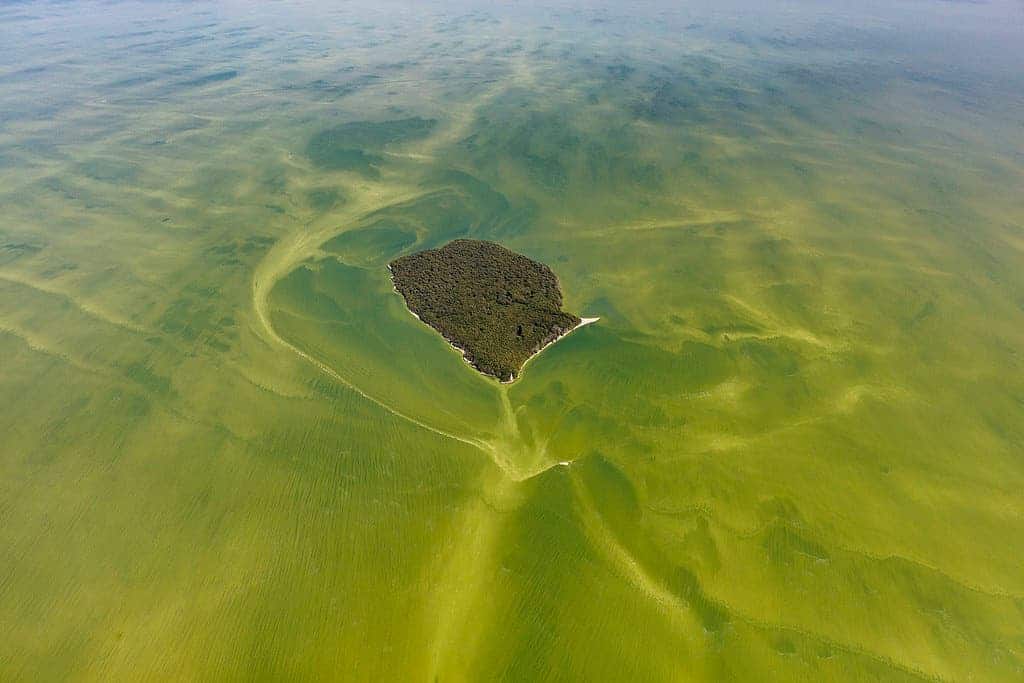One possible solution to nutrient pollution and dangerous algal blooms could be seaweed farms, a new paper reports.

We don’t tend to think of “too much food” as a real problem, but for ecosystems around the world, it very much can be. Marine ecosystems especially suffer from nutrient pollution, as most of our waste tends to get dumped in the sea. This kind of pollution can become very deadly, as high levels of nutrients foster algal blooms which destroy water quality and deplete its oxygen — in short, they kill everything else around them.
New research at the University of California Santa Barbara suggests that aquaculture could help prevent such issues in the future.
Farmwater
“A key goal of conservation ecology is to understand and maintain the natural balance of ecosystems because human activity tends to tip things out of balance,” said co-author Darcy Bradley, co-director of the Ocean and Fisheries Program at the university’s Environmental Markets Lab.
Today’s reliance on industrial-scale farming on dry land is the main cause of nutrient pollution. Runoff from croplands contains huge levels of all kinds of nutrients (huge relative to their natural abundances) that plant life needs, including critical bottleneck nutrients such as nitrogen (a key ingredient in fertilizers). This input means that areas of the ocean can accumulate much higher quantities of nutrients than they would naturally.
A new study proposes seaweed farms as a possible solution, especially for nitrogen and phosphorus. Such farms would be able to scrub large amounts of nutrients even after they’ve made their way into the ocean at relatively low costs. The team identified over 63,000 square kilometers suitable for seaweed aquaculture in the Gulf of Mexico alone.
Algal blooms are dangerous primarily because of how fast they develop, and the huge amount of dead biomass they eventually produce. Algal blooms are, boiled down, communities of opportunistic algae and bacteria that rapidly expand in size when given the proper conditions. While they do produce oxygen while alive, the sheer volume of individuals dying in such a bloom at any one time consumes all the oxygen around them as they decay, which produces large hypoxic “dead zones” in which nothing else can live.
Seaweed farming could draw out at least part of these excess nutrients, which would limit the unchecked growth of algae and microbes. The oxygen output from these farms would also help prevent the appearance of dead zones.
The team looked at data regarding nutrient pollution in the U.S. Gulf of Mexico. It was selected as it’s the end-point for many waterways in the US — more than 800 watersheds across 32 states deliver nutrients to the gulf. A growing hypoxic dead zone has also been documented in the gulf, which was estimated to be just over 18,000 square kilometers back in 2019.
The authors analyzed data from the U.S. Gulf of Mexico, which they say exemplifies the challenges associated with nutrient pollution. More than 800 watersheds across 32 states deliver nutrients to the Gulf, which has led to a growing low-oxygen dead zone. In 2019, this dead zone stretched just over 18,000 square kilometers, slightly smaller than the area of New Jersey.
Using open-source oceanographic and human-use data, the authors pinpointed which areas would benefit from seaweed farming. Around 9% of the US exclusive economic zone in the gulf qualified, particularly areas off the west coast of Florida. But not all of that has to be farmed for us to see a positive impact.
“Cultivating seaweed in less than 1% of the U.S. Gulf of Mexico could potentially reach the country’s pollution reduction goals that, for decades, have been difficult to achieve,” said lead author Phoebe Racine, a Ph.D. candidate at UCSB’s Bren School of Environmental Science & Management.
Research such as this is important as countries around the world (the US included) already spend a lot of money trying to deal with nutrient pollution. Seaweed farming would complement such efforts at a very low cost, the team explains. Even better, seaweeds grown this way would have practical applications for industries ranging from fertilizers to biofuels, and agriculture.
The paper “A case for seaweed aquaculture inclusion in U.S. nutrient pollution management” has been published in the journal Marine Policy.


